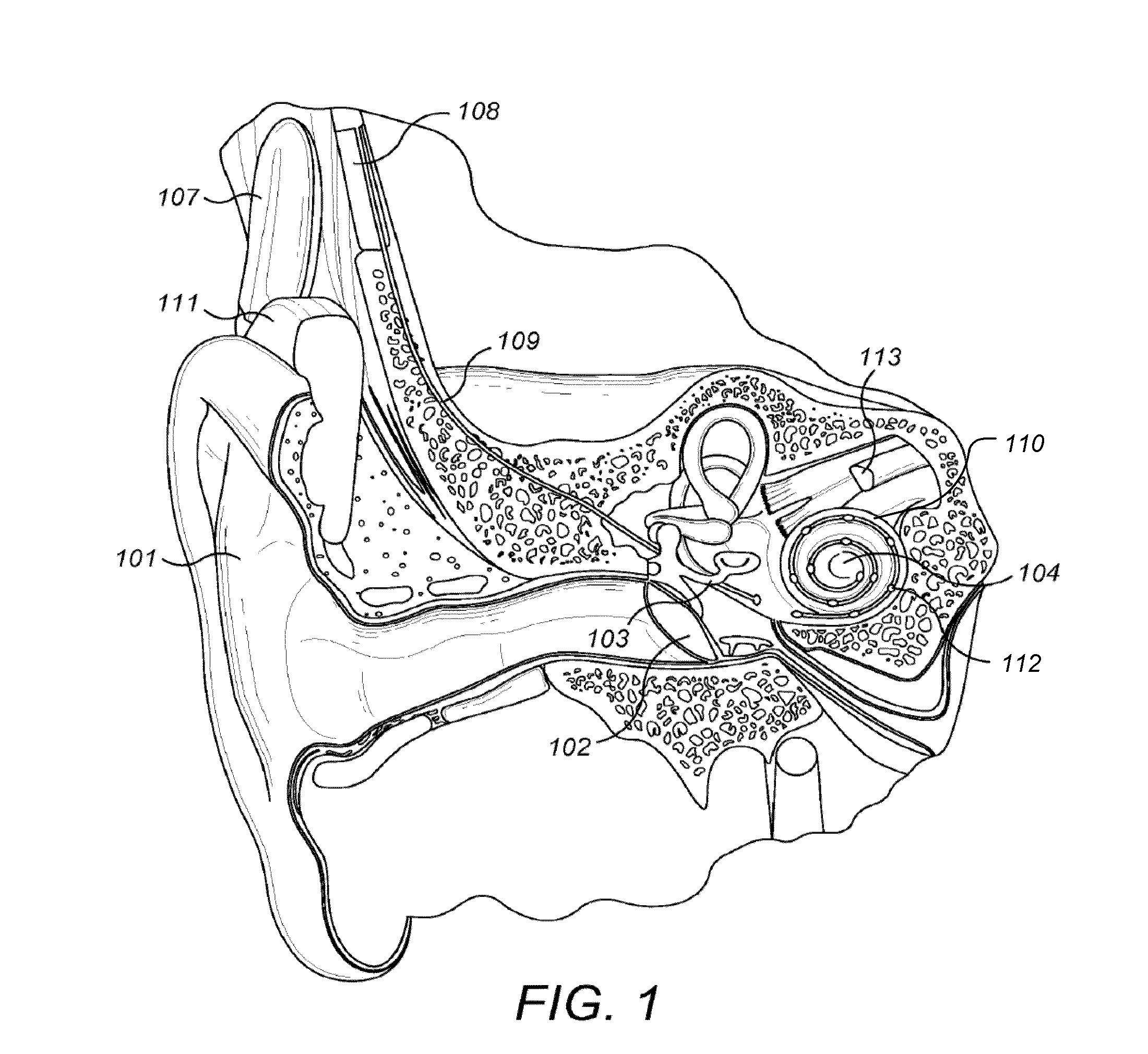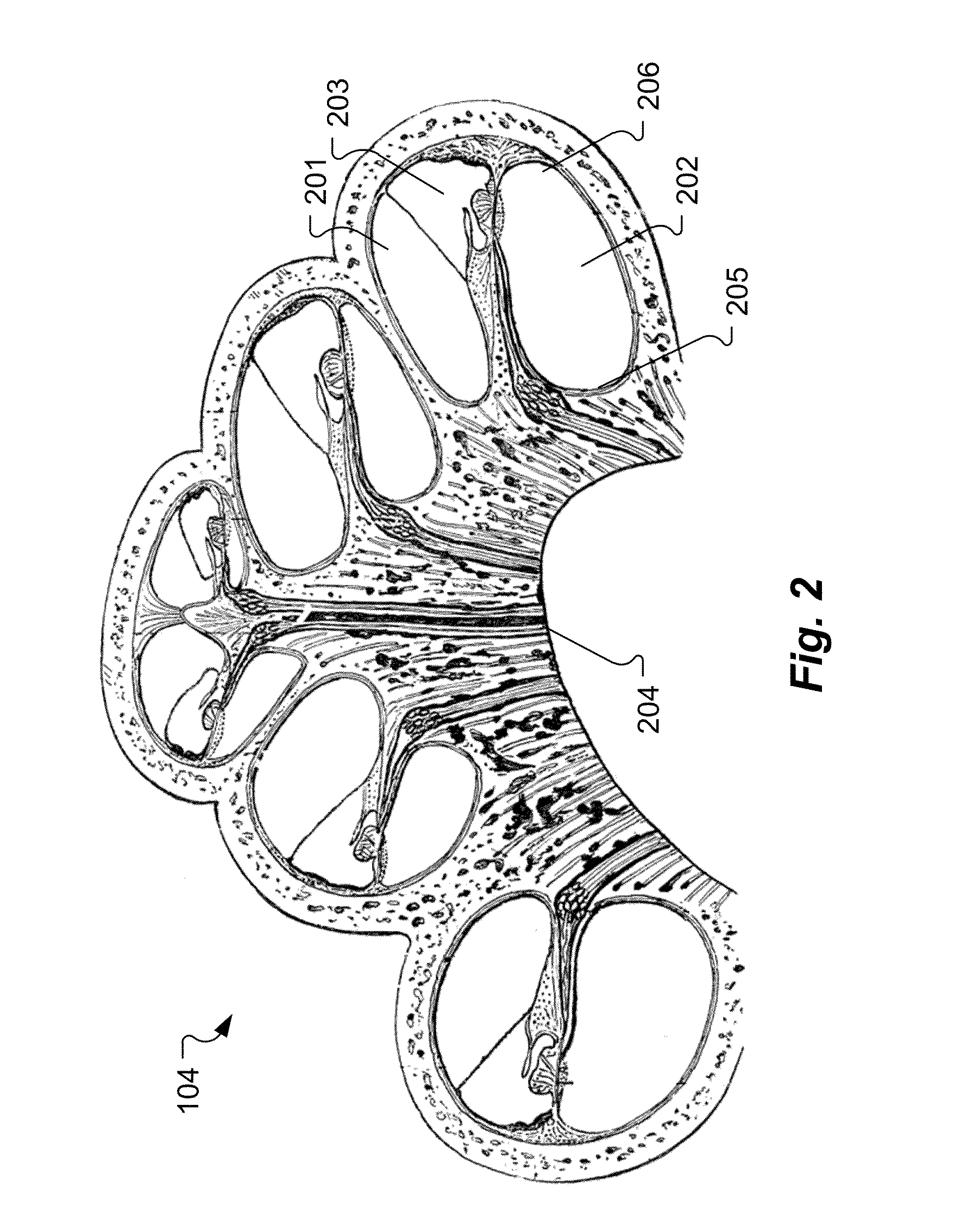Cochlear Electrode With Apical Lateral Wall Section and Basal Modiolar Hugging Section
- Summary
- Abstract
- Description
- Claims
- Application Information
AI Technical Summary
Benefits of technology
Problems solved by technology
Method used
Image
Examples
Embodiment Construction
[0025]Embodiments of the present invention are directed to implantable electrode arrays for cochlear implants that is very atraumatic, but also very effective in terms of focused stimulation. This is achieved with an electrode array that has two different sections. An apical section of the electrode array remains straight to be atraumatic and protect the delicate anatomical structures. A basal branch of the electrode array is designed to be positioned close to the modiolar window.
[0026]FIGS. 4A-4C show structural details of an implantable electrode array 400 that includes an array trunk 401 that extends along a center axis 402 into the scala tympani from an insertion opening in an outer surface of a patient cochlea. An apical section 403 extends out from the distal end of the array trunk 401 along the center axis 402. The apical section 403 has multiple stimulation contacts 404 distributed along its outer surface for delivering electrical stimulation signals to adjacent neural tissu...
PUM
 Login to View More
Login to View More Abstract
Description
Claims
Application Information
 Login to View More
Login to View More - R&D
- Intellectual Property
- Life Sciences
- Materials
- Tech Scout
- Unparalleled Data Quality
- Higher Quality Content
- 60% Fewer Hallucinations
Browse by: Latest US Patents, China's latest patents, Technical Efficacy Thesaurus, Application Domain, Technology Topic, Popular Technical Reports.
© 2025 PatSnap. All rights reserved.Legal|Privacy policy|Modern Slavery Act Transparency Statement|Sitemap|About US| Contact US: help@patsnap.com



